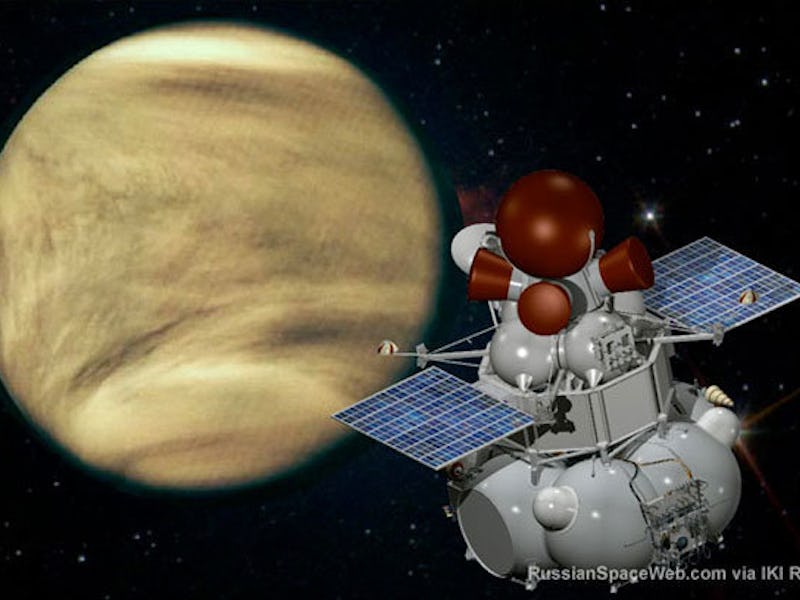Russian Scientists Will Drop a Big Red Ball Onto Venus
Inside will be a heat resistant lander.

Russia is hell-bent on revisiting Venus, the planetary furnace that has already cooked to death its previous nine landers.
The Russian Space agency, Roscosmos, released a conceptual video over the weekend that shows how it plans to drop a lander down to Venus in 2025. The video, shown below, depicts a spacecraft releasing a large red ball through the fuming gases. The ball then opens up and releases the Venera-D lander, a heat-resistant instrument meant to investigate the 880-degree Fahrenheit planet for past signs of water.
Oppressive heat isn’t the only problem. Venus has been subject to a runaway greenhouse gas effect, resulting in thick atmospheric gases that create a crushing pressure, 90 times that of Earth.
Little is known about the surface of Venus. The planet is shrouded by 12 mile deep clouds of sulfur dioxide, and for now, there is no hope of sending any long-lived rovers to scour the planet’s geology (like the robots currently exploring Mars.)
Still, Russian scientists have been deeply interested in Venus for over 50 years, having sent their first Venera probes to Venus in the 1960s. The landers, however, quickly succumbed to death on the unfriendly surface. Four landers successfully settled down in the mid-1970s, but none lived for more than 110 minutes.
Finally, in 1982, a lander survived for some two hours and sent back the first and only images of the rocky, almost Martian surface.
Now, Roscomos hopes to send a both an orbiter and lander back in 2025. The space agency originally had designs to make a lander robust enough to survive for a month. According to the Russian space site Russian Space Web, these plans were dropped “due to many technological challenges of building heat-resistant electronics and their high price tag.”
After leaving its big red ball, the lander will take measurements of the Venetian atmosphere as it parachutes to the surface. Once there, the lander will inspect the soil, although Venera-D won’t scoop up any samples and bring them inside the instrument for evaluation.
Images of the rocky Venus surface, sent back from the Venera 13 lander in 1982.
NASA may join forces with Russia to fund and develop the Venera-D mission, but it’s unclear if NASA will be will able to commit funds to such a collaboration. NASA wants to find life — or evidence of past life — and Mars, Europa, Enceladus all seem like better places to look.